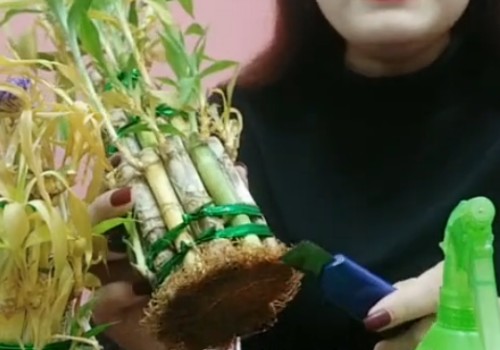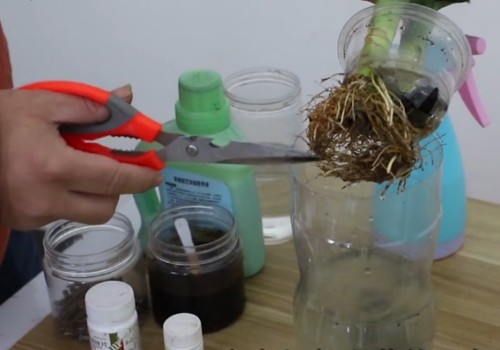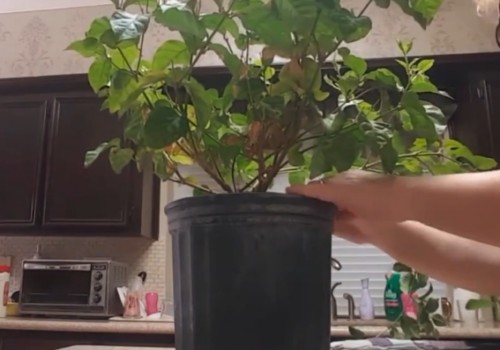What about the rotten roots of rich bamboo?
Hydroponic rich bamboo is the most suitable for indoor culture, but hydroponic rich bamboo has a fatal disadvantage that it is easy to have rotten roots, and then even the water will become rotten. So, what about the rotten roots of rich bamboo?

After the hydroponic rich bamboo has rotten roots and water odor, it not only affects the normal growth of the plant, but also affects the ornamental, more importantly, the water quality corruption will emit an unpleasant smell, which not only affects the body and mind, but also affects the health. After all, the rotten water quality contains many harmful bacteria, even germs, which will not only pollute the indoor air over time, but also bring germs out of the space.
When we encounter the above problems, we should first collect the plants from the water environment in time, and then use sharp scissors or art knives to clean up the blackened or rotten roots of the plants. For some roots where decay can not be seen, gently pinch it with your hands. If there is a soft spot at the bottom of the stem, it means it is rotten.
Whenever a rotten place is found, the original should remove it from the base until the rotting and blackening area at the bottom of the stem is cleaned up, and it is generally cut into a 45-degree slope. Then clean and sterilize the roots, along with the containers. In this way, the contact area between the base and water can be increased, which is more conducive to the later rooting and restoration of growth.
Then inject an appropriate amount of water into the container that has been cleaned and sterilized, and you can also sprinkle a little salt in the water, which can play the role of secondary disinfection for the roots of the plant. Then the processed rich bamboo is re-inserted into the container and placed together with the container in a cool and ventilated place for maintenance.
If all goes well, the plant will take root again in a few days. And when it takes root smoothly, we will apply a little compound fertilizer to it. Pay attention to be sure to control the amount of fertilizer solution, generally dripping 1-2 drops at a time, too much dripping will lead to too high concentration, which will also cause damage to the roots of the plant. Because the new roots that have just sprouted are still very young and weak, a little carelessness may cause damage, which will continue to cause rotten roots.
Many potted friends do not know how much water needs to be injected into the container when raising rich bamboo. In fact, we do not need to use too much water. If there is too much water, it is easy to submerge some leaves of the plant, resulting in rotten leaves and roots, and then water odor.
Therefore, if we encounter the smell of rich bamboo raised by water, then we need to change the water in time, and at the same time, we should also check whether the roots of rich bamboo rot. Once rotten roots are found, the roots should be trimmed in time, or even removed, sterilized and reimplanted.
Time: 2019-05-27 Click:
- Prev

What about the rotten roots and yellow leaves of rich bamboo?
Fugui bamboo is a kind of evergreen ornamental plant in four seasons, but many potted friends often encounter its yellow leaves in the process of conservation and management. On the other hand, rich bamboo has yellow leaves, and the general problem lies in the roots. It is mainly caused by the damage caused by the damage of the root or the invasion of viruses and bacteria.
- Next

What if the jasmine leaves turn yellow and lose their leaves?
Potted jasmine not only has high ornamental value, but also exudes pleasant fragrance. Put it in the indoor environment for maintenance, when flowering can bring a room full of fragrance. Not only that, jasmine can also be made into tea, which is also fragrant and delicious. But
Related
- Fuxing push coffee new agricultural production and marketing class: lack of small-scale processing plants
- Jujube rice field leisure farm deep ploughing Yilan for five years to create a space for organic food and play
- Nongyu Farm-A trial of organic papaya for brave women with advanced technology
- Four points for attention in the prevention and control of diseases and insect pests of edible fungi
- How to add nutrient solution to Edible Fungi
- Is there any good way to control edible fungus mites?
- Open Inoculation Technology of Edible Fungi
- Is there any clever way to use fertilizer for edible fungus in winter?
- What agents are used to kill the pathogens of edible fungi in the mushroom shed?
- Rapid drying of Edible Fungi

